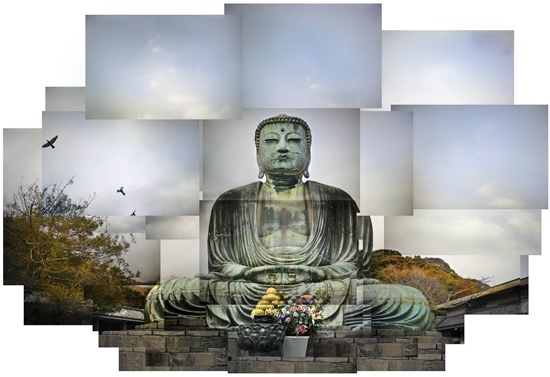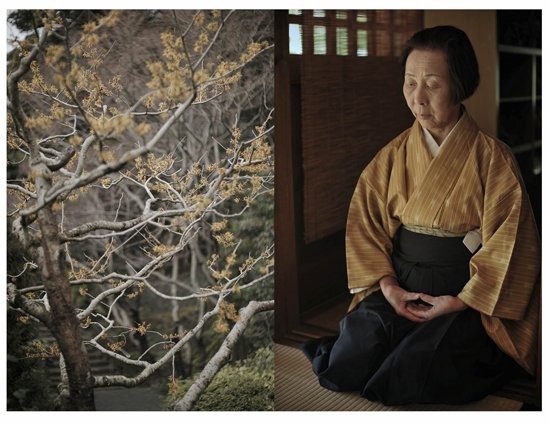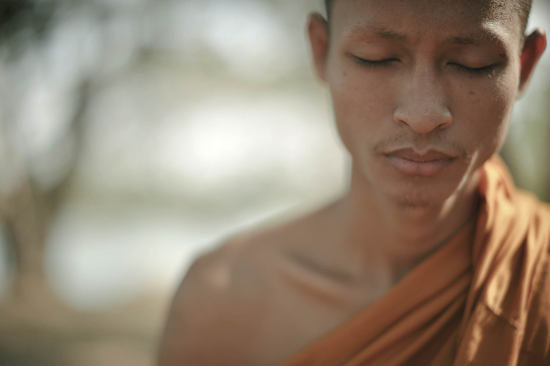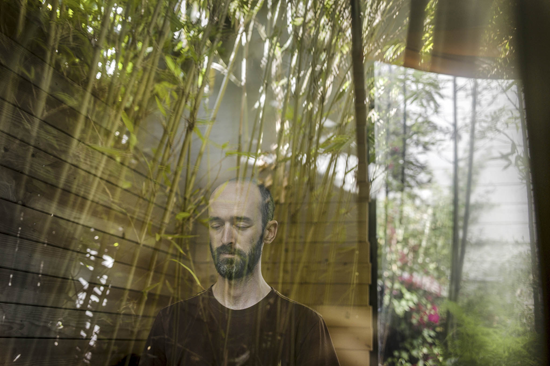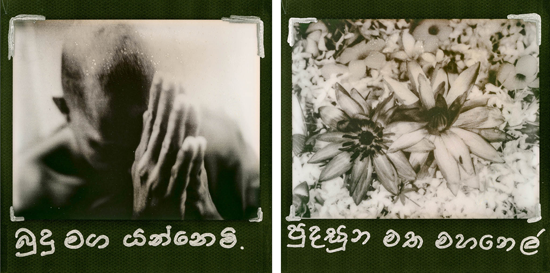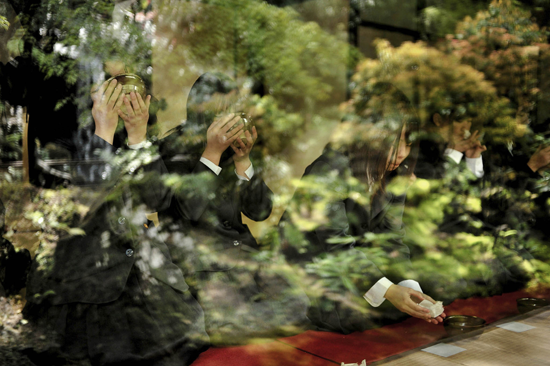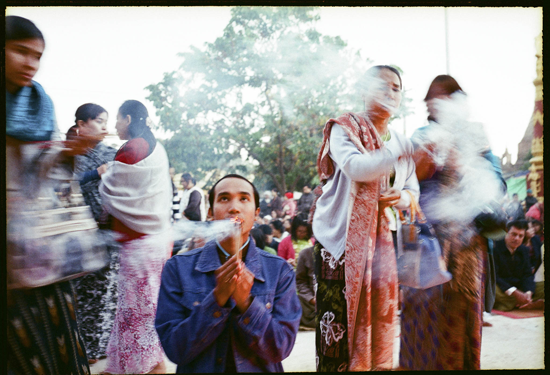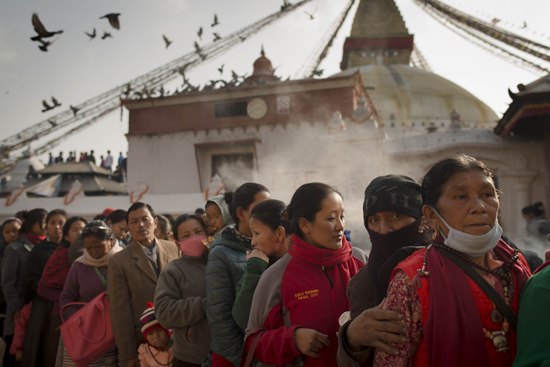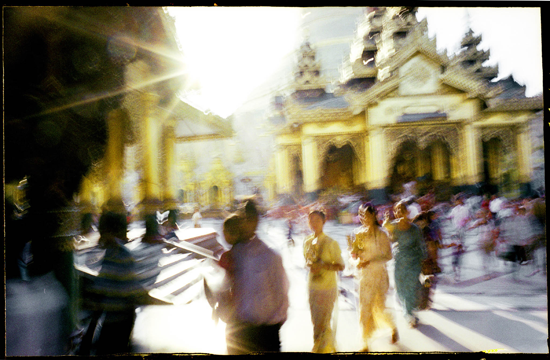When I first began talking about this project, many people asked me, quite reasonably, whether I was a Buddhist. The answer to that question is not so simple: both “yes” and “no” and neither “yes” nor “no.”
My first real exposure to Buddhism came in 1986, when I visited Tibet as a college student along with my mentor, Ed Hille, a professional photojournalist. I had been to Europe but never to Asia or the developing world, and in fact, I barely understood who the Dalai Lama was. I loved being there and taking pictures, but I was mostly attracted to the superficial exoticism. I wasn’t mature or curious enough to attempt to grasp the spiritual elements of Tibet’s culture.
A full decade passed before I paid Buddhism much more attention. After graduating from college in Texas, I had moved to Los Angeles and was working as magazine photojournalist when a friend who was teaching meditation classes gave me a book he’d written on Buddhism. That piqued my curiosity; over the years I read a few more books on the subject. Many of the ideas resonated with me because they suggested a way of looking life’s larger questions that was free of rigid dogma and was not at odds with science.
Around the same time, my photographic work was growing deeper. I was doing fewer lifestyle and portrait assignments, spending more time in conflict zones and places that had been hit by natural disasters and other tragedies. The challenge of any photographer is to observe the humanity in the scene and then use their own personality and empathy to translate those emotions into the picture. It was during this period that I read Jean-Pierre Montier’s “Henri Cartier-Bresson and the Artless Art.” I became intrigued by the links that Cartier-Bresson, my photographic hero, had made with photography and Eastern philosophy and Buddhist ideas.
Cartier-Bresson was influenced by a book called “Zen in the Art of Archery,” written in the late 1940s by Eugen Herrigel, a German who had gone to Japan to study the martial art Kyudo. Cartier-Bresson was especially interested in the parallels of being an archer with being a photographer: to concentrate in order to focus the mind and body, and then to react, at the precise or “decisive” moment to take the shot, whether you were shooting an arrow or a picture.
One of the main goals of capturing the decisive moment in photography is that it creates a pleasing arrangement of graphic elements in the image; as a photographer, you’re trying to freeze the moment where the elements line up in just the way you want. I think I’ve always had an instinct for making these arrangements, but good composition alone doesn’t make a good picture. Cartier-Bresson’s genius was not just in design—it was in the personal sense of humanity that his photographs revealed. Photography, he wrote, is about “putting one’s head, one’s eye, and one’s heart on the same axis.”
I hung a quote by another great photographer, Ansel Adams, in my home office: “If the documentary photograph is to be truly effective, it must contain elements of art, intensity, fine craft, and spirituality.” Some of my pictures had intensity, I was working on the fine craft, and on the best days there was some art, but wasn’t so sure that I was getting to the spirituality. To put that quality into a photograph requires a certain kind of preparation and meditation, a heightened level of awareness and seeing that goes way beyond the superficial. I had found over the years that the really good pictures came when I wasn’t thinking too much, when I was reacting with my eyes, mind, and heart simultaneously and almost unconsciously engaged.
Out of the tens or hundreds of thousands of frames I’d shoot in a year, if I added up the total time when I thought I was in that complete mindset, it would only be a few minutes. The photograph reflects a moment that is happening out in the world, and also one that is happening in the minds of the photographer and the viewer. The fact that the moment is fleeting and will never get repeated adds to its appeal. A photograph acknowledges this transience. The best ones attach meaning to it.
I was curious how this intersection of design, emotion, sensibility, and sensitivity could be seen in the visual design of Buddhist cultures: in art and architecture, of course, but also, I thought, in the variety of Buddhist practices. Most spiritual literature uses the words see or vision to describe the transcendent experience. If Buddhist practitioners were trying to “see” Buddha and attain enlightenment, I would photograph them in the process and try a little seeing of my own, merging the ideas of observation in both the photographic and spiritual sense. The viewers of my images would also participate in this process.
First, I made a list of key places to go, constructing a journey into the heart of Buddhism, the places where it began and spread from, and where it was the dominant religion of the area. Some of those places, like Tibet and Nepal, I’d already visited, but many I had not, like Bodhgaya, India, the site of the Buddha’s enlightenment, and Bhutan, a country where Buddhism is the official national religion.
I used both digital and film techniques and a variety of cameras and formats to emphasize the cultural variety of these places and practices. The variations also helped me to find different ways of perceiving the subject; the experience of using an $80 plastic camera loaded with black and white film, limited to 10 frames, is much different, for instance, from photographing with a modern DSLR. I shot digital color in the standard 3×2 format everywhere I went, but in many locations I used a film technique exclusive to that place.
These pictures are a tightly edited sample of what I saw and how I felt. To go to these places and witness these scenes was a privilege, but communicating the visual and personal experience is the far greater pleasure. You, the viewer, are now part of that process.
A Photoshop-assembled collage of individual photographs of The Great Buddha (Daibutsu) in Kamakura, Japan, at the Kotoku-in temple. Different planes of focus and tonality were used in the photographs, highlighting various aspects of the statue and its setting.
This diptych pairs a tree from a Zen garden in Kyoto, Japan, with a portrait of a woman inside a temple in Kamakura, Japan.
A monk meditates on the grounds of Angkor Wat, the ancient temple complex in Siem Reap, Cambodia.
Surrounded by bamboo, a man meditates in a small house he built in the backyard of another home in San Francisco, California.
A collaboration between the photographer and a Sri Lankan monk based in California, this Polaroid-style diptych combines two photographs from Sri Lanka, a praying monk and a temple flower, with writing in Sinhala, the native script of Sri Lanka, which describes the scene.
The grounds of a Zen temple in Kyoto, Japan, are reflected in the window of a room where Japanese school children participate in a traditional tea ceremony.
Burmese gather to pray and light incense at a temple in the ancient city of Bagan during a year-end moon, full moon festival.
A crowd forms outside of the Boudhanath stupa in Kathmandu, Nepal, to be received by a highly respected Nepalese Buddhist monk.
Buddhist practitioners make their way through the grounds of the Shwedagon Pagoda in Rangoon, Burma, at dusk. The pagoda complex is one of the largest and oldest Buddhist sites in the world. The image was made using “push-processed” film and a slow shutter speed.
